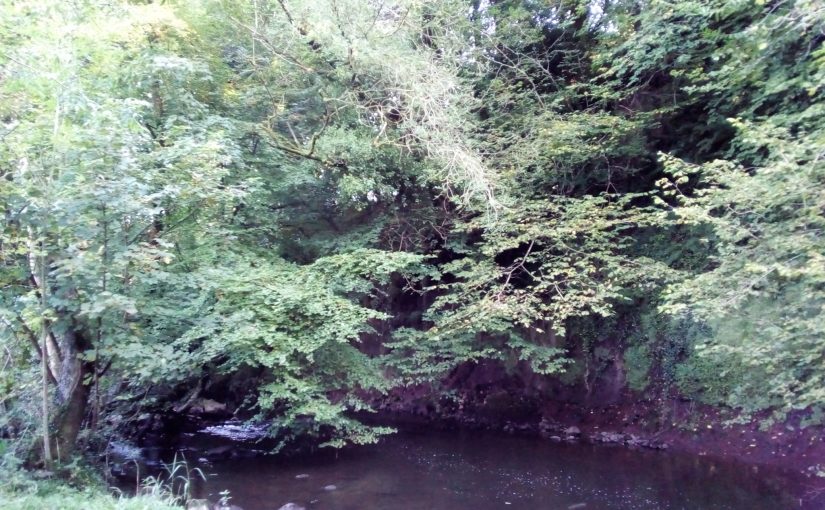Daniel (or Donald) Black was a traditional Irish harper in the 18th century. He was alive in 1792 and so we have to say something about him as part of my Long 19th Century project, to investigate the traditional Irish harpers who were active from 1792 onwards.
Continue reading Daniel BlackTag: Bunting
Rose Mooney
Rose Mooney was a traditional Irish harper in the second half of the 18th century. She was still alive after 1792 which means that, as part of my Long 19th Century project, I have to try and say something useful about what she was doing from then onwards.
Continue reading Rose MooneyKate Martin
Kate Martin was a traditional Irish harper in the 18th century. We have only a few references to her, and they are all retrospective. Some of them imply or state that she was still alive at the beginning of our Long 19th Century study period, but I think this is not reliable information. This post is to discuss the information we have to see if we can say anything useful about Kate Martin from 1792 onwards.
Continue reading Kate MartinDominic O’Donnell
Dominic O’Donnell was a traditional Irish harper who was alive and active towards the end of the 18th century and apparently into the beginning of the 19th century. We have very little information about him. This post is to gather together the different references to see if we can say anything useful about what he was doing during our Long 19th Century study period (1792 onwards).
Continue reading Dominic O’DonnellPatrick Byrne part 4: 1841-4
In Part 1, I wrote about Patrick Byrne’s early years and education, down to his discharge from harp school in 1822. Then in Part 2, we looked at his early career, working for patrons in Ireland and England from 1822 to 1837. Part 3 covered his first visit to Scotland over the winter of 1837-8, and his tour of Ireland in 1839-40.
By the beginning of 1841, Patrick Byrne was in his mid 40s. His regular job at the Royal Hotel in Leamington Spa had given him access to high-ranking aristocratic patrons in England and Scotland, and he spent time visiting them at their houses around Warwickshire and near Edinburgh, as well as maintaining a circuit of patrons in Ireland. He seems to have deliberately built these networks of patronage, so that by the beginning of 1841 he got as high as he ever could, by performing for Queen Victoria at Windsor Castle.
Continue reading Patrick Byrne part 4: 1841-4Patrick Byrne part 3: 1837-1840
In Part 1, I wrote about Patrick Byrne’s early years and education. Then in Part 2, we looked at his early career, working for patrons in Ireland and England.
By the summer of 1837, Patrick Byrne was approximately 40 years old; he had made a lot of contacts amongst the English and Irish aristocracy, and he had proved himself by his regular job at the rather high-class Royal Hotel in Leamington Spa, Warwickshire, England.
We will continue the story on Wednesday 18th October 1837, when Patrick Byrne left Leamington Spa and began the journey North to Edinburgh.
Continue reading Patrick Byrne part 3: 1837-1840Dennis Hampson
Dennis Hampson (also known as Denis, Hempson, O’Hampsey, and other variants) was a traditional Irish harper in the 18th century. He lived through into the early 19th century and so he has a place in my “Long 19th Century” project.
Continue reading Dennis HampsonFéachain Gléis
When I started my Old Irish Harp Transcription project, one of my aims was to move away from what had been happening before, where people focussed in on particularly interesting, curious or unusual tunes, and studied them intensively while kind of ignoring the broad context of other tunes in the manuscripts.
However, now that I have pretty much gone through all of the “ordinary” harp tune transcriptions I am just left with those unusual ones. I did consider ignoring them but I think there is value in dealing with them. But I think I have to do them a bit differently.
So, for this tune we will discuss four aspects of it. First, we will look at its position in the manuscript, which raises some important questions about Bunting’s collecting process. Then, because it is one of the most studied old Irish harp tunes, we will briefly consider what other people have written about it. Thirdly, we will talk a little about parallels in other traditions. And finally we will think about it in the context of a pentatonic modes analysis.
Continue reading Féachain GléisCoolin, or Lady of the Desert
The Coolin, or the Lady of the Desert, has been discussed a lot by Irish harp scholars over the years, most recently by Siobhán Armstrong in her PhD thesis (Middlesex 2020). However it is an incredibly muddled subject. I am not sure if we have one tune or two; I am not sure if the titles are connected or garbled; the live transcription notation from a harper looks like it has been heavily over-written and edited, so that we cannot see the initial live transcription dots; and in general this is the kind of problem notation that I have been silently skipping over in my Old Irish Harp Transcriptions Project.
However we should try to begin untangling some of these threads, and try to say something useful about all this.
Continue reading Coolin, or Lady of the DesertTwo letters to Edward Bunting
In 1839, the elderly Edward Bunting was living in Dublin and was preparing the piano arrangements and text for his final publication.
Two Belfast gentlemen wrote two different letters to him, about the then-still-living Irish harp tradition.
Continue reading Two letters to Edward Bunting








